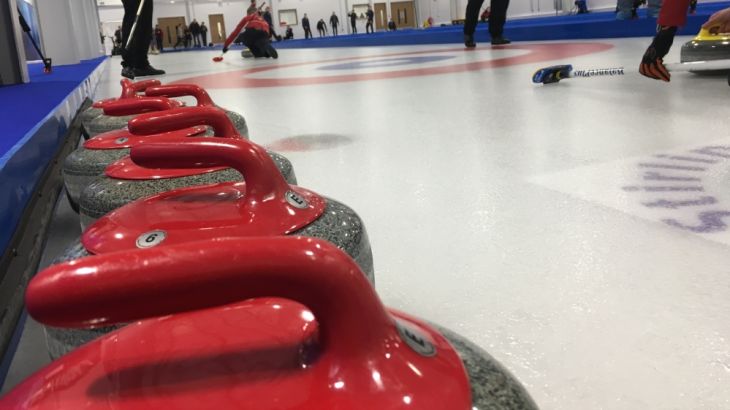Olympics: How Scotland made curling a British success
The strange yet mesmerising game on ice has been a successful Olympic sport for decades for Britain.

Curling makes a strange, unfamiliar spectacle for many sports fans across the world.
But in Scotland, it’s been part of life for centuries. Scottish curlers have made it a successful Olympic sport for Britain for two decades, as well as a popular sport to follow.
Keep reading
list of 4 itemsIndonesia’s Christie takes Asia badminton crown ahead of Paris Olympics
Akebono, sumo’s first foreign-born grand champion, dies aged 54
Track and field becomes first sport to pay prize money at Olympics
The British public has been encouraged to try curling after watching Team GB sweep its way to a succession of medals.
So what is curling? Think “bowls on ice”.
The sport can be played indoors or outdoors on a long straight strip of ice with a circular target at each end. Teams of two or four compete. Each player gets to throw at least two stones.
The stones are giant pieces of 20kg granite, usually from the tiny island of Ailsa Craig off the west coast of Scotland.
What makes the sport so distinctive and cultish is the sweeping. The sight of the remaining team members sweeping the ice furiously with long brushes starts off as amusing, but becomes mesmerising.
![Stones are usually from the tiny island of Ailsa Craig off the west coast of Scotland [Lee Wellings/Al Jazeera]](/wp-content/uploads/2018/02/46824410983f4821a6352f35846e84ff_18.jpeg)
I wanted to explore the history. Is it really true that a recorded instance of curling took place as early as the 16th century?
The minister of the former monastery Paisley Abbey, Reverend Alan Birss, was the man to ask. He explained a monk was said to have tossed the first stone on a nearby loch (lake) for a wager in 1541.
Health and safety regulations dictate that lochs need to be covered by at least 15cm of ice to permit an official curling match. The last time a Grand Match took place was on the Lake of Mentieth in 1979.
I wanted to see the lake for myself, but after particularly bad weather in Scotland, this was proving tricky.
We were plotting a path through the woods in a remote location when help suddenly and unexpectedly arrived via a local maintenance worker. He opened a gate with direct access, but needed a favour in return.
And so I found myself in the bizarre position of helping to clear fallen trees while cameraman Martin Langley and Scottish Curling’s Judith McCleary started filming. Her help and guidance were invaluable. She’s not only a key organiser, but a brilliant curler too.
It was freezing. But mercifully, the National Curling Academy in Stirling is indoors, and that’s where we watched the British teams prepare for South Korea.
The women’s team, led by Eve Muirhead, and the men’s team that includes her sheep-farmer brothers Glen and Thomas, will be hopeful of medals in Pyeongchang with a real chance of gold.
With Eve’s permission, cameraman Martin attached a small GoPro camera to one of her curling stones and we were thrilled with the result.
If you get a chance to watch the Olympic curling unfold on your screens and devices its recommended but be careful: matches take far longer than most events in the Winter Games – and it’s strangely addictive.
![The first recorded instance of curling taking place was in the 16th century [Lee Wellings/Al Jazeera]](/wp-content/uploads/2018/02/18393e70a8aa4bd9acabe779e2efa866_18.jpeg)